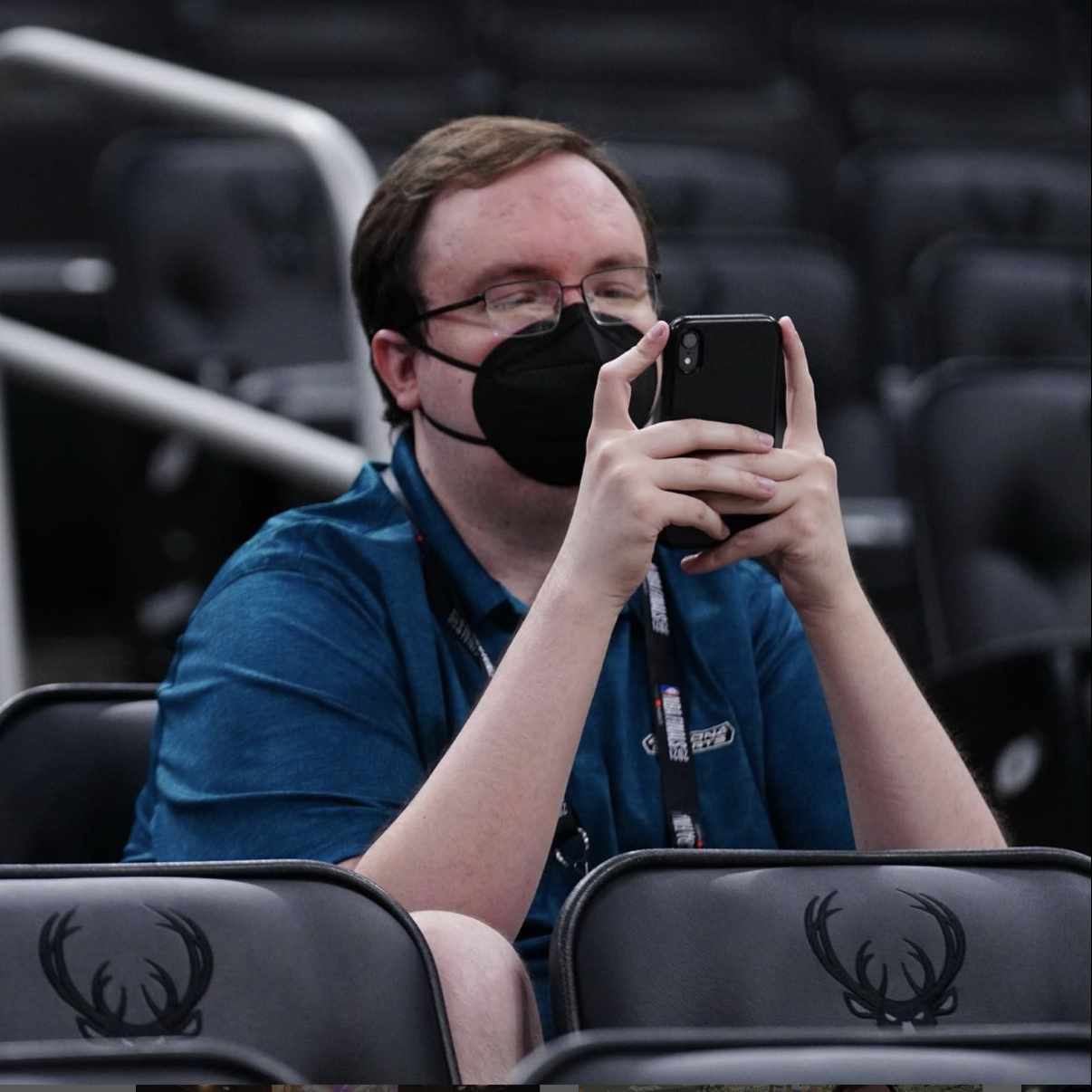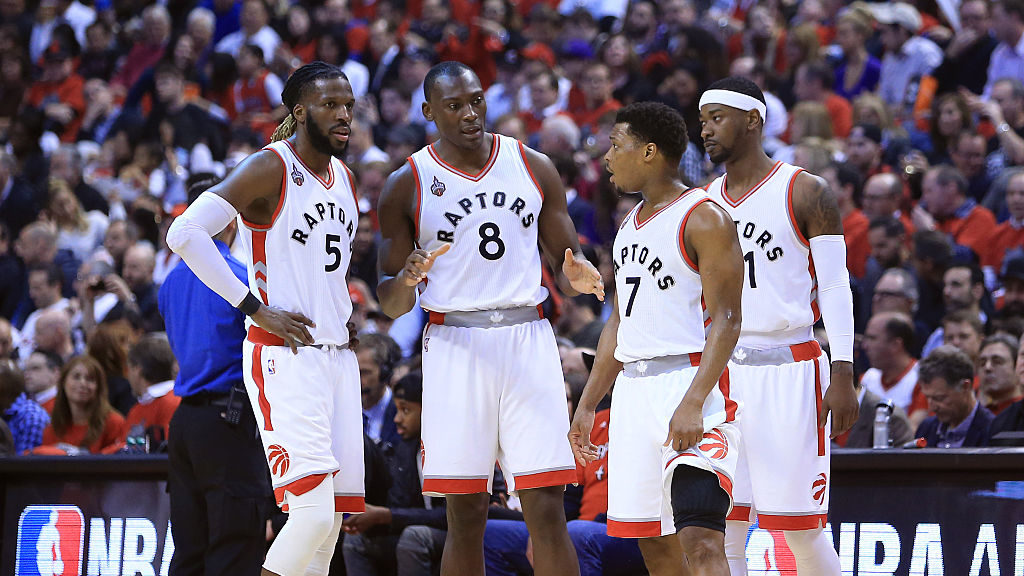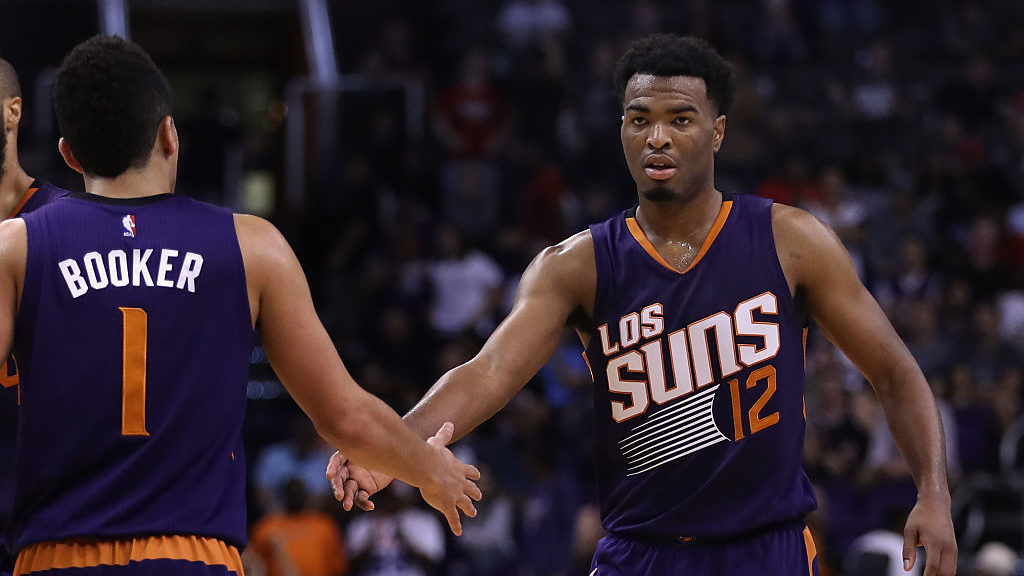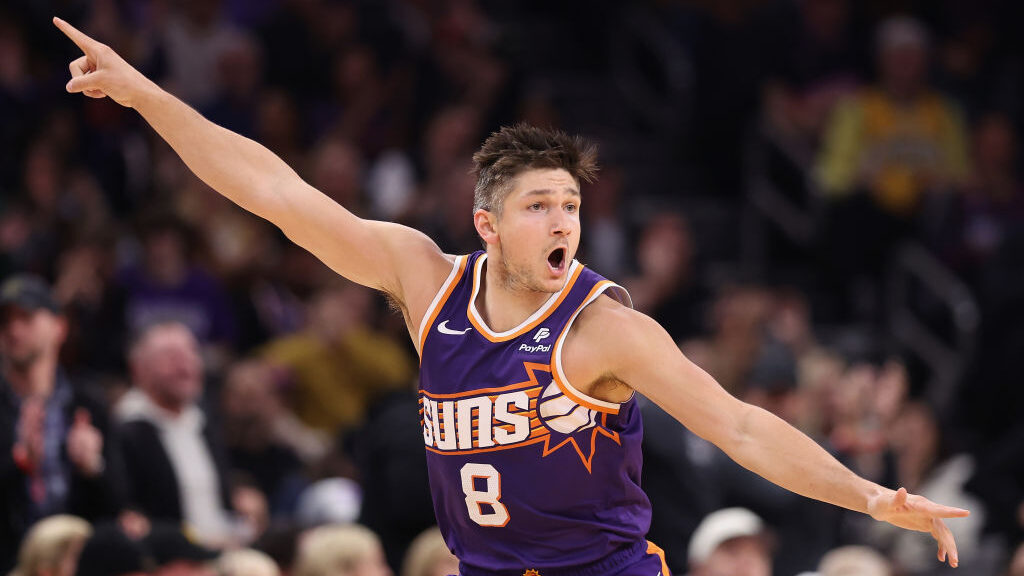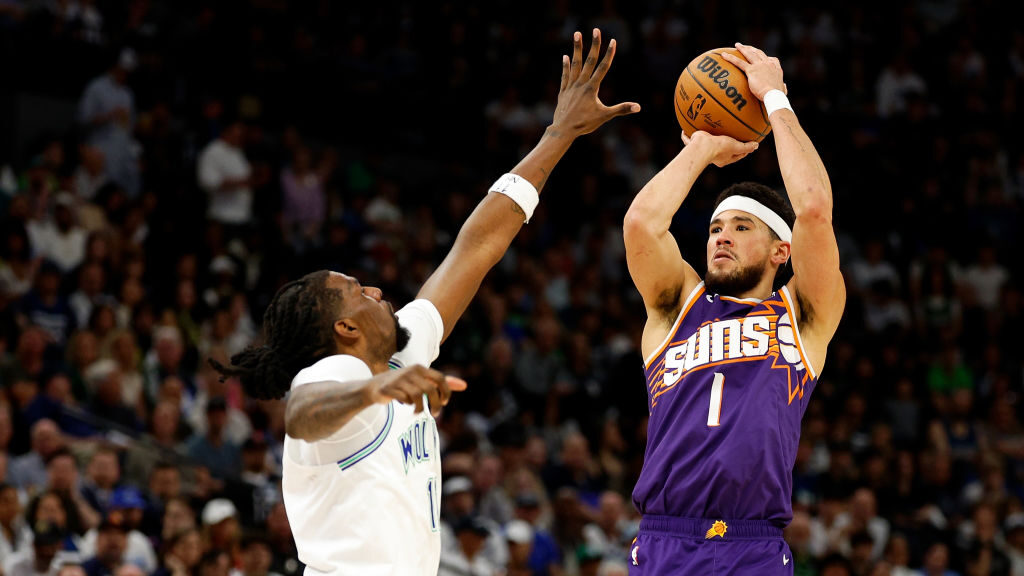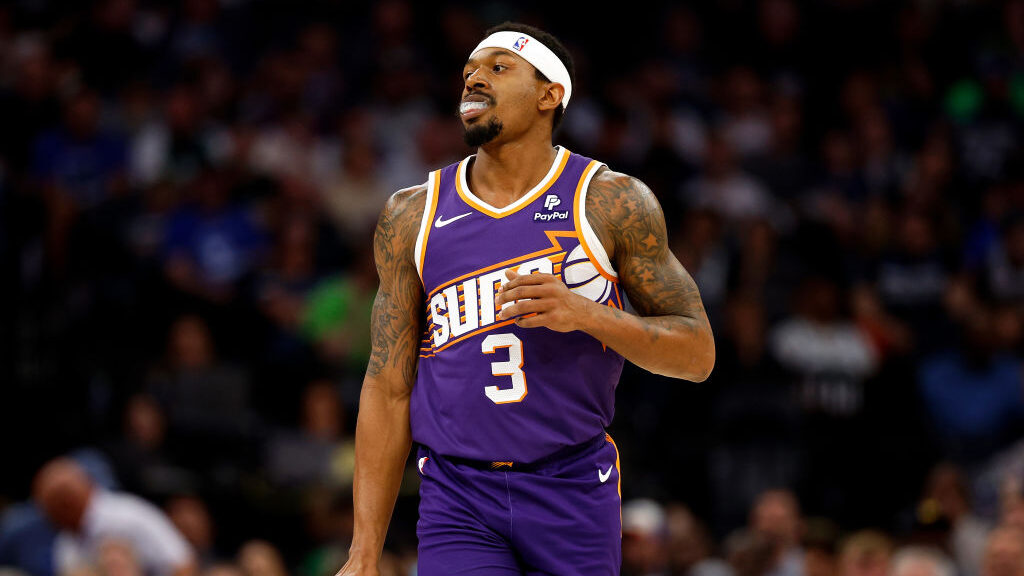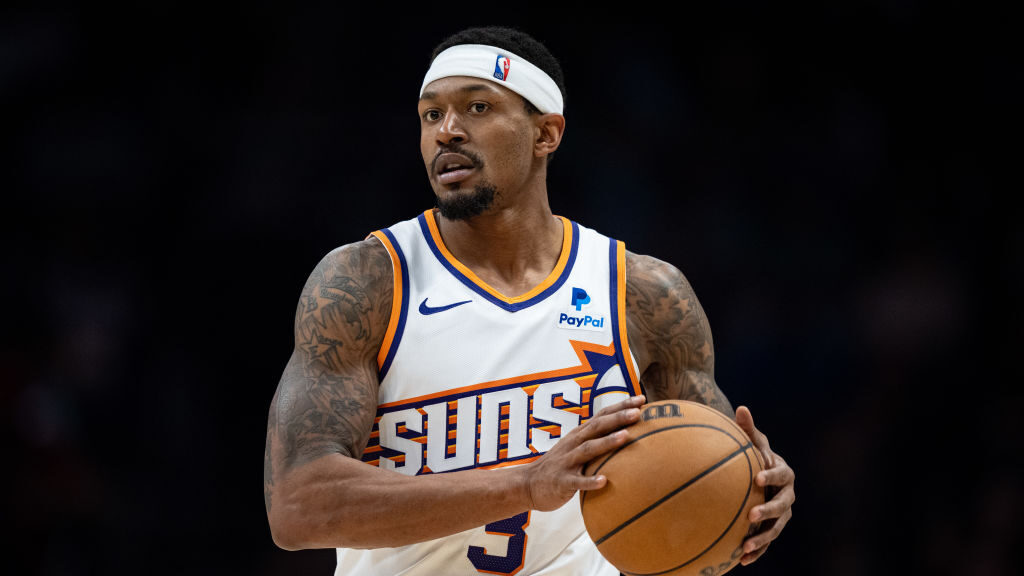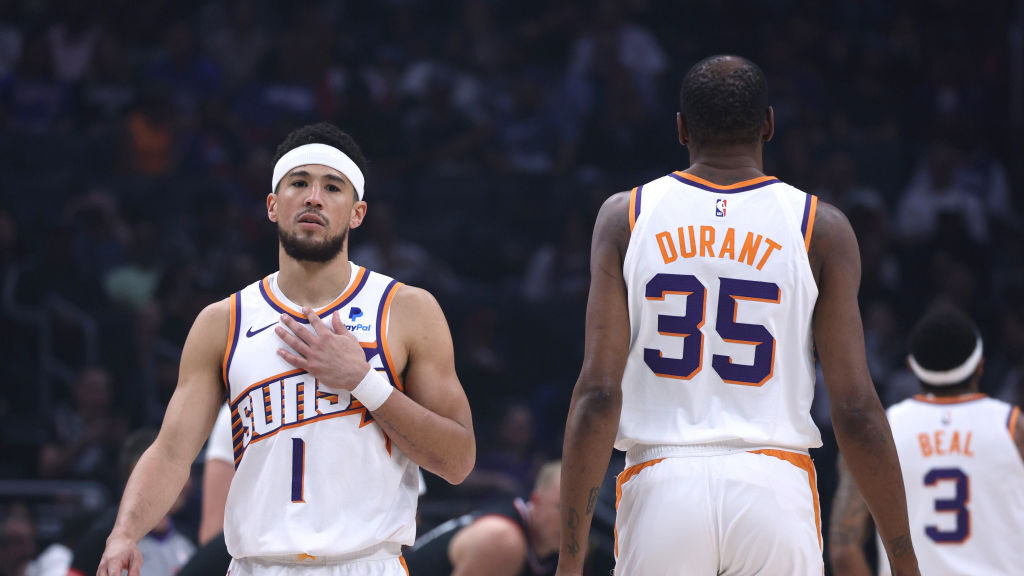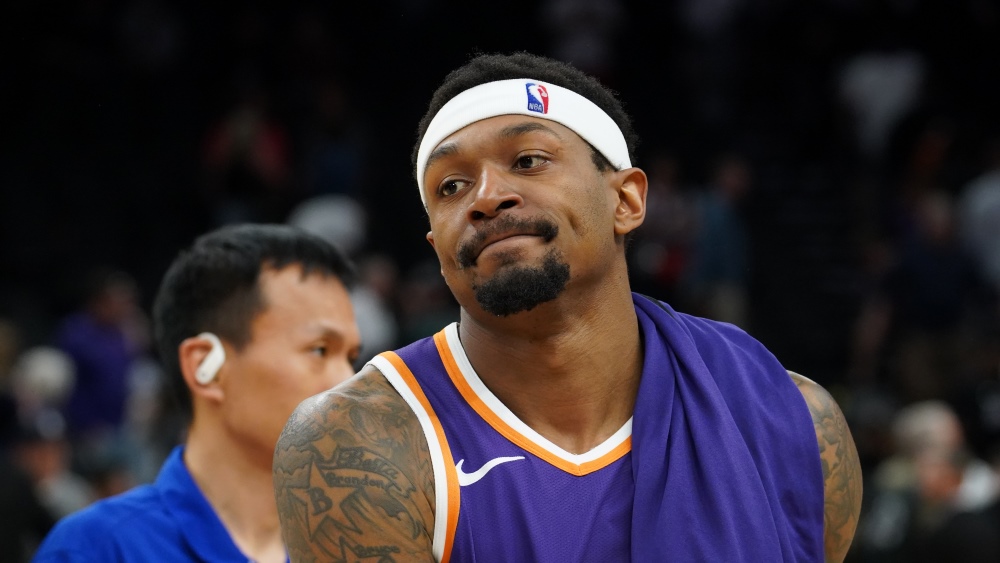Kevin Durant’s versatility, adaptability evolves Suns’ offense
Feb 21, 2023, 9:51 AM | Updated: 10:21 am
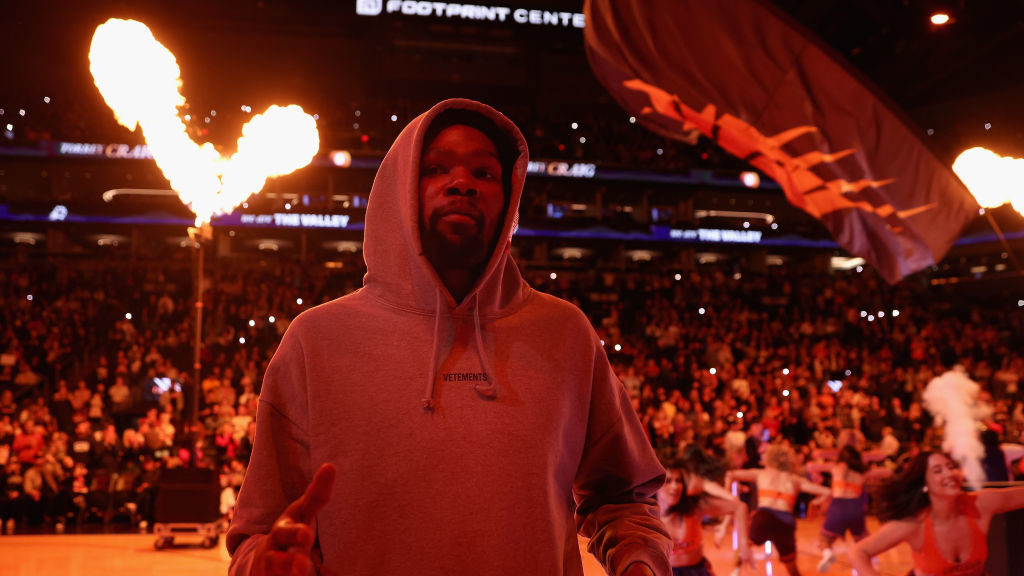
Kevin Durant #35 of the Phoenix Suns walks onto the court before the first half of the NBA game against the Sacramento Kings at Footprint Center on February 14, 2023 in Phoenix, Arizona. (Photo by Christian Petersen/Getty Images)
(Photo by Christian Petersen/Getty Images)
PHOENIX — The majority of us have seen Kevin Durant play enough basketball to have an idea of what he will bring to the Phoenix Suns.
But what do you think of first when that pops into your head?
For me, it’s adaptability and versatility.
When Durant joined Golden State to form a superteam in 2016, there were (stupid) questions about his fit. The ol’ “there’s only one ball’ shtick. But the Warriors’ fluid philosophies and offensive system created arguably the best offensive basketball we’ve seen in this modern era.
Durant can do most anything on the floor on both ends and knows how to insert himself into those spots seamlessly. His greatness has just as much to do with his all-around prowess than the hesi-tween-tween dribble combinations leading into unguardable pull-ups at his size.
Here’s what Durant had to say at his introductory press conference on Thursday when asked about his adaptability and versatility.
“I think I built my game around being efficient, taking good shots, making good plays on both ends of the floor,” he said. “I think my defense feeds my offense. I like to take shots in the midrange, I like to cut to the basket, I like to do the little things throughout the offense and I think that’s what makes you a versatile player and be able to adapt to any offense. Just being able to space the floor and use my skill to help other players. I’ve been doing that my whole career.”
Some of that prowess, like his passing and defending, should be mentioned as well but will not be our focus today.
What will be is the Suns’ halfcourt offense. At the All-Star break, they rank 21st, per Cleaning the Glass.
Injuries have surely played a factor. Phoenix was third in each of the last two years. But the Suns’ limited options caught up to ’em this season, a thing of the past now with Durant’s arrival.
The Suns’ style of play, like Golden State’s, functions with on- and off-ball movement. Head coach Monty Williams refers to “0.5” often, meaning it’s about decisions over a half-second or less. Once the defense has been forced to rotate, no hesitating. Keep it moving.
This will be a tremendous breath of fresh air for Durant’s game, especially given how much he will be freed up and set up by two guys not named Devin Booker. Durant has never played with a high-scoring, mobile gravitation field of a center like Deandre Ayton or a low-volume, floor general maestro of a point guard like Chris Paul.
And Williams can put Durant anywhere and he can be anyone. I mean anywhere and anyone.
To illustrate that, let’s roll through the Suns’ previous top four shot-takers, where they get their shots in the halfcourt and show Durant in those spots for Brooklyn this year to put the adaptability and versatility on display before we see Durant do it in the purple and orange.
All video courtesy of NBA.com/Stats
Mikal Bridges
We should start with the guy Durant is replacing.
Before Bridges’ ascent as a ball-handler and secondary scorer, the primary area for his touches came in around the elbow, via designs to get him slithering toward the basket.
The “Mikal-bow” on the elbows got Bridges to his signature fallaways from 8-14 feet, or if he got a clear enough lane to the basket, use of his extend-o-arms for a finish at the basket.
This is one of the ways I am the most interested to see how the Suns deploy Durant, because, as is the case with anything the Suns run, you see the little counters and variations mixed into whatever they do.
If that’s the equivalent of rocket science, then the Nets were building volcanoes for show-and-tell to get Durant elbow buckets in their offense this year (And if it ain’t broke don’t fix it, but this is more to emphasize the attention to detail Phoenix has in his department).
The majority of Durant’s field goals this year off of these types of actions were just one pindown screen. Sometimes they’d get fancy and toss a second over there or execute an elevator-doors version but that was about it.
The last two clips in here highlight the threat Durant is as a movement shooter. He comes to the pindown against Milwaukee and then Memphis gets our most complex version, with Durant faking his way toward the baseline screen and going to the pindown instead.
All of that gallop, step, swivel, turn, rise and fire motion is something.
When Durant gets mixey around that pocket, the floor is spaced out and it’s normally going to be him and the screener inside the 3-point line.
As Durant mentioned, he loves a good cut. Bridges was one of the best cutters in the league and he gets replaced by one in that company, too. If anyone wants to cheat on those future elbow sets to try and get a step ahead on a dribble-handoff, Durant will get a blink-and-you-miss-it two free points.
Devin Booker
Part of asking last week about Durant’s adaptability is because we witnessed Booker’s ability to slide into a different role for Team USA when they won a gold medal in Tokyo. Booker formed a menacing defensive backcourt with Jrue Holiday, picking up ball-handlers with fullcourt pressure and doing various glue-guy things to star in his role. The Olympics god squads are all about who can do that, and Booker did.
Here’s the second half of Durant’s answer on that point with Booker and how they will mesh.
“I’m looking forward to playing with somebody like Book who plays kind of similar to how I play,” Durant said. “We use the same spots on the floor but try to do it quick and efficient.”
Quick and efficient, you say?
There is this statistic called points per touch that Booker has dominated since Williams got to the Valley. It provides a better picture of who is the most efficient with the number of times they have the ball.
Looking at players who get at least 50 touches a game, a decent break-off for most No. 1 options, Booker has placed first in points per touch each of the previous three seasons, according to NBA.com. He’s dropped to fourth this year, and do you want to guess who is one of the three players ahead of him? Ah, yes, the Slim Reaper of course.
The smaller bit of off-ball work Booker does for that efficiency compared to the traditional ball-screen actions that dominate his workload is curling actions going to his right. Expect to see more of these (for either guy) with Durant’s presence giving more room (and Booker will go left occasionally too).
As you may have noticed on that last make, they’ve always got counters!
To quickly revisit the elbow and show one example of how the Suns can blend this stuff together, New Orleans’ Herb Jones sees the design for Bridges coming, calls out a switch and oh cra—
Picture Durant as Bridges there. No. Actually. How about Durant as the screener (Bismack Biyombo), setting a screen for a diving Ayton and then popping back out with Booker in the weak-side corner. What in the world are you supposed to do with that?
Here is Durant curling in Brooklyn. He will use both sides.
I know it would probably look like a bad college motion offense but it would be amusing if we got one look at Booker curling right only for it to feed directly into a dribble-handoff of Durant curling left.
Wait. About that.
Let’s reel in Paul to cover ball screens and the trickery with what the Suns do.
Chris Paul
Ultimately, the Suns’ pick-and-roll majesty has a new ceiling unlocked because of Durant.
ESPN’s Zach Lowe expertly detailed it during the 2021 Finals run, with little wrinkles we’ve become accustomed to pointing out like “The Lift.”
There is a level of brain-scrambling Durant will create. Whether it’s as the ball-handler, spacer or screener (more on that later), there will only be bad choices for defenders to make. They’ll just have to decide which one isn’t as worse as the other on the fly.
Look at this.
It’s true. This offense was made for KD. https://t.co/HPQP1IJSeJ pic.twitter.com/60QjmPEaYa
— Mike Vigil (@protectedpick) February 15, 2023
It’s dressed up as an action for Booker that triggers a trap until Paul comes roaring around the left wing and then Ayton re-enters the fray to let Paul glide into the middy.
A lot of the process involves Paul’s brain and what he’s seeing. The first quarter for the Point God is all about data accumulation. He’s downloading what he sees and will eventually figure out something he likes and will repeatedly go to it.
If Ayton is screening for someone besides Paul, do not conclude your job is done already.
Remember when I brought up counters and variations? The next time down, Pacers guard Tyrese Haliburton thinks he’s slick seeing the same play and cuts off Paul’s angle.
Never assume you are slicker than Paul.
Credit to Ayton on the angle of the screen, something he and Paul have meticulously improved together.
The crazy part of this is that Paul can quarterback it without himself on the ball. To circle back to Bridges, Paul orchestrated the same spam with a little twist for the former Suns wing to ice an overtime win in San Antonio.
Imagine Paul calling the shots like that for Kevin Durant and collaborating with him. We won’t have to for much longer.
Deandre Ayton
Wherever it is on the floor, when a center’s team has the ball, his No. 1 job is screen setting.
Ayton does it everywhere, and more exciting possibilities for Phoenix come when inserting Durant in that role.
Whether it comes with Ayton on the floor in the dunker spot (under the basket on the baseline) or while using Durant as a 5, it’s another way to challenge opposing defenses.
Unless they are attacking certain switching matchups, Phoenix doesn’t dabble too much in untraditional screening on the ball beyond the center doing it, something trending up in the last half-decade of the game’s evolution. Durant can be implemented in Ayton’s positions to get more of that going.
There are obviously the movements at the top of the key, where Durant can either set a hard pick to force a deep recovery back to him, use his man draped over him to create a switch (like Booker will) or ghost screen (a quick fake) to increase tempo into a similar result.
I’m keeping an eye on empty, side pick-and-rolls, which includes a ball screen action on either wing when the Suns’ three other players are on the opposite side of the floor. That opens the corner and there’s no defensive rotation coming over from there. Bridges’ takeover against the Spurs was a trio of those, as an example.
Here are Ayton and Booker running it when KD was in the building on Thursday. Focus on the amount of real estate to work with because of the empty corner, something Phoenix utilizes often.
This gets scary with Durant. I’ll include one look off the ball here that the Nets used to give him a post isolation.
Speaking of that, Durant with 2.5 seasons in Brooklyn attempted roughly one-and-a-half shots per game on post-ups and he shot 58.4% on them, per NBA.com.
Everything else
Most of what we covered are small, niche complexities. Durant as a pick-and-roll ball-handler, attacking switches, working into isolation and so on is the beef of what he brings to a halfcourt offense.
There’s also just having him out there as a spacer, a top-of-the-line shooter and the best scorer who can engage a defense while it’s recovering.
You want to see a guy playing in 0.5 attacking closeouts?
Occasionally, defenders are so busy trying to execute concepts they forget they are marking Durant and just leave him. I bet this will happen more alongside Ayton, Booker and Paul.
Because of Durant’s adaptability and versatility, he will be plug-and-play in so many ways.
It’s also not going to be just plug-and-play.
Durant’s involvement over the next six weeks will see the Suns evolve their own offense around what he does, just like they did for Bridges and have for Ayton, Booker and Paul. By the time the playoffs roll around, fine-tuned intricacies with multiple layers will sprout.
Fortunately, that foregone conclusion is not our problem to worry about, unless you’re an opposing coach reading this. If you are, good luck.

